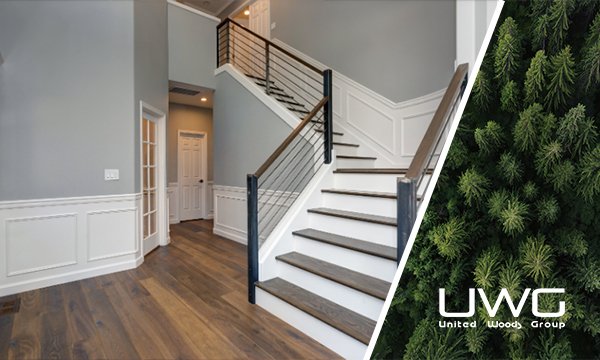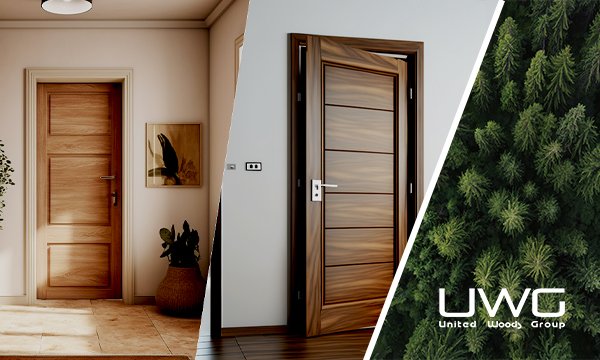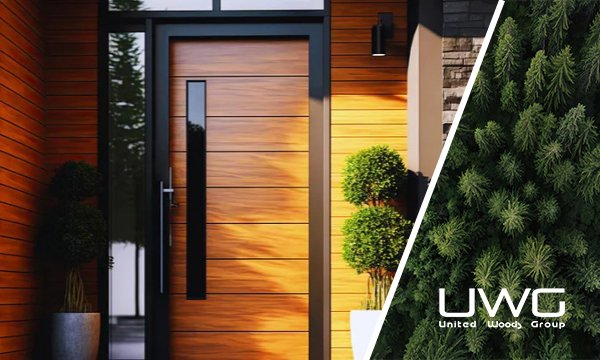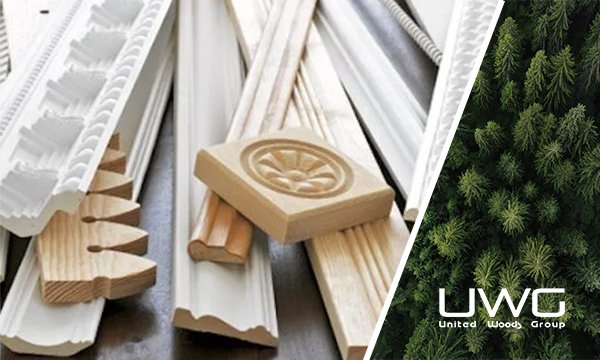When it comes to choosing the perfect door for your home, the decision often boils down to the type of material. Two popular options are Wood Plastic Composite (WPC) and teak wood. Each has its unique characteristics, benefits, and potential drawbacks. In this article, we will compare WPC and teak doors in detail to help you make an informed decision that suits your needs and preferences.
WPC is resistant to splitting and splintering. Natural wood is not. WPC is more durable and weather resistant than natural wood. WPC is not affected by water, snow or heat.
Let’s dive deeper into the features and differences between WPC and teak doors, looking at their advantages, disadvantages, and suitability for various applications.

Are WPC doors better than wooden doors?
WPC doors are known for their water resistance, durability, cost-effectiveness, eco-friendliness, and insulation. Unlike wooden doors, WPC doors do not absorb moisture, making them ideal for areas prone to dampness, such as bathrooms and kitchens. They are also more resistant to termites and pests, which can be a significant advantage in certain climates.
Additionally, WPC doors offer superior insulation properties, helping to maintain a comfortable indoor temperature and potentially reducing energy costs. They are also less prone to warping and cracking, ensuring they maintain their appearance and functionality over time. From an environmental perspective, WPC doors are often made from recycled materials, making them a more sustainable option compared to traditional wooden doors.
Despite these benefits, some people prefer the aesthetic appeal and natural feel of wooden doors. Teak doors, in particular, are valued for their rich, warm tones and unique grain patterns. However, they do require more maintenance to protect against moisture, pests, and wear over time.

What are the disadvantages of WPC?
While WPC doors offer many advantages, they also have some drawbacks. The initial cost of WPC doors can be higher compared to other materials, though this is often offset by their durability and low maintenance requirements. Additionally, the finishes on WPC doors can sometimes appear artificial, which may not appeal to everyone. For those who prioritize a natural look and feel, wooden doors may still be the preferred choice.
WPC doors also require minor maintenance to keep them looking their best. While they are more resistant to damage than wooden doors, they can still get scratched, particularly on horizontal surfaces. It’s essential to clean and maintain them regularly to prevent any buildup of dirt or grime, which can affect their appearance and longevity.
Another potential disadvantage is that WPC doors may not have the same structural strength as solid wood doors. While they are generally more flexible and resistant to impact, they may not provide the same level of security and stability as a well-constructed teak door. This is something to consider if security is a top priority for your door choice.

Which is the best quality wood for a door?
When it comes to wooden doors, there are several types of hardwood that are considered high quality, each with its own unique characteristics and benefits:
- Accoya: Known for its durability and long life, Accoya wood is treated through a process called acetylation, which enhances its resistance to rot and decay. This makes it an excellent choice for exterior doors that are exposed to the elements.
- Oak: Oak doors offer a classic and luxurious feel. They are strong, durable, and resistant to wear and tear, making them suitable for both interior and exterior applications. Oak also has a beautiful grain pattern that adds a touch of elegance to any space.
- Mahogany: A popular choice for its rich color and grain, mahogany is highly durable and resistant to moisture, making it a good option for exterior doors. It also has a smooth texture that finishes well, allowing for a polished and refined look.
- Walnut: Known for its strength and beautiful appearance, walnut wood has a deep, dark color that adds sophistication to any door. It is also relatively easy to work with, allowing for intricate designs and details.
- Merbau: Highly resistant to termites and decay, merbau wood is a durable option for exterior doors. Its natural oils help protect against the elements, ensuring long-lasting performance.
- Cherry: Offering a smooth texture and rich color, cherry wood is often used for interior doors. It darkens over time, developing a beautiful patina that adds character and warmth to any room.
- Spanish Cedar: Known for its pleasant aroma and resistance to insects, Spanish cedar is a popular choice for exterior doors. It is also relatively lightweight, making it easy to work with and install.
- Pine: A versatile and cost-effective option, pine wood is widely available and easy to work with. While it is not as durable as some hardwoods, it can be treated and finished to enhance its performance and appearance.
Each of these woods has its own unique advantages, and the best choice will depend on your specific needs.

What is the lifespan of a WPC door frame?
WPC door frames are known for their long lifespan, typically lasting a minimum of 50 years. This makes them a durable and cost-effective choice for homeowners looking for longevity in their door materials. The combination of wood fibers and plastic creates a strong, resilient material that can withstand various environmental conditions without deteriorating.
In comparison, traditional wooden door frames, including those made from teak, may require more frequent maintenance and replacement. While high-quality wood like teak can last for decades with proper care, it is still susceptible to damage from moisture, pests, and wear over time. WPC door frames, on the other hand, are designed to resist these issues, ensuring they remain in good condition for many years.
The durability of WPC door frames also makes them a good investment for property owners looking to reduce long-term maintenance costs. With minimal upkeep required, WPC door frames can help save time and money on repairs and replacements, making them a practical choice for both residential and commercial properties.

Which is better, WPC or teak door?
On forums like Reddit, users often debate the merits of WPC versus teak doors. WPC doors are praised for their durability, low maintenance, and eco-friendliness. Many users appreciate that WPC doors do not require the same level of upkeep as wooden doors, making them a convenient option for busy homeowners.
However, teak doors are valued for their natural beauty, strength, and traditional craftsmanship. Teak wood has a timeless appeal that many people find attractive, and its unique grain patterns add character and elegance to any door. Additionally, teak is known for its exceptional durability and resistance to moisture and pests, making it a reliable choice for exterior doors.
The choice between WPC and teak doors ultimately depends on individual preferences and the specific needs of the homeowner. Those who prioritize low maintenance and durability may prefer WPC doors, while those who value natural aesthetics and traditional craftsmanship may opt for teak doors.


Which is better, WPC or teak door for bathroom?
WPC doors are generally considered the better option for bathrooms due to their superior water resistance. Bathrooms are high-moisture environments, and the ability of WPC doors to resist water absorption makes them an ideal choice for this setting. They are less likely to warp, swell, or develop mold and mildew, ensuring they remain in good condition despite constant exposure to moisture.
Teak doors, while durable and resistant to rot, can still absorb moisture over time, which may lead to warping or damage in a humid environment. Proper sealing and maintenance can help mitigate these issues, but WPC doors offer a more worry-free solution for bathrooms. Additionally, WPC doors are available in various designs and finishes, allowing homeowners to choose a style that complements their bathroom decor.
The low maintenance requirements of WPC doors also make them a convenient choice for bathrooms, where frequent cleaning and upkeep may be necessary. With their durable, water-resistant properties, WPC doors can withstand the demands of a busy bathroom environment while maintaining their appearance and functionality.


Summary
Choosing between WPC and teak doors depends on various factors, including budget, maintenance preferences, and environmental conditions. WPC doors offer durability, water resistance, and cost-effectiveness, making them a great choice for many homeowners. Teak doors, with their natural beauty and strength, remain a premium option for those who value aesthetics and traditional craftsmanship.
When making your decision, consider the specific needs of your home and the environment in which the doors will be used. Both WPC and teak doors have their unique advantages, and the best choice will depend on your priorities and preferences.








